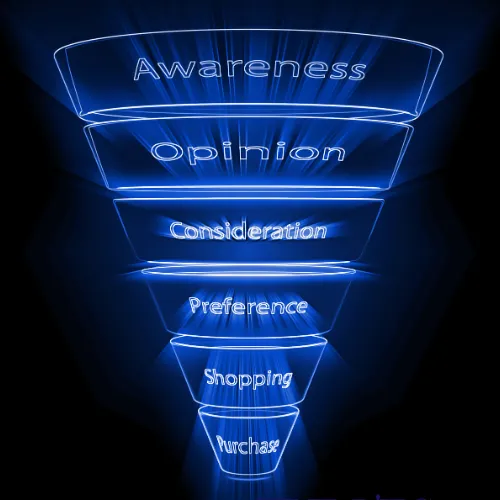Secrets Behind Powerful Brand Messaging Strategies

In an era where consumers are bombarded with choices, how does a business stand out? Effective brand messaging strategies are vital for communicating a clear value proposition and attracting targeted clientele. This post will explore core brand positioning concepts, strategies for developing effective messaging, and common mistakes to avoid. Readers will learn how to create sustainable brand messaging that resonates, helping to alleviate the challenges of a crowded market. By engaging with this content, businesses can refine their approach and ensure their messaging connects meaningfully with their audience.
Key Takeaways
Effective brand positioning differentiates a business from competitors by highlighting unique selling propositions.
Consistent messaging across all channels fosters trust and enhances overall brand recognition.
Customer feedback and market research are essential for relevant and effective messaging strategies.
Leveraging storytelling creates emotional connections that can significantly boost customer loyalty.
Tailoring brand communication to specific market segments improves engagement and aligns with consumer needs.
Understanding the Core Concepts of Brand Positioning and Messaging
Brand positioning and messaging are essential for defining how a company like crowned creative agency is perceived in the market. Understanding their significance involves exploring the narrative that connects a brand to customer success. This section covers key elements shaping effective brand positioning, messaging techniques that resonate with target audiences in the home market, and the crucial link between brand identity and messaging. Each topic will provide practical insights and strategies for enhancing brand communication.
Defining Brand Positioning and Its Significance
Brand positioning involves defining a clear value proposition that sets a business apart from its competitors. By thoroughly conducting market research, companies can gain insights into customer psychographics—understanding their motivations, preferences, and behaviors—allowing them to craft a brand promise that resonates deeply. This approach enhances brand recognition and fosters trust and loyalty among consumers, making effective brand messaging a pivotal element in achieving customer success.
Exploring the Role of Messaging in Brand Communication
Messaging is vital in shaping brand communication, particularly in the retail sector. Clear, consistent messaging can bolster a brand's credibility, enhancing its reputation among consumers. For example, companies that prioritize exceptional customer service often emphasize this in their messaging, creating a direct connection with their audience and fostering loyalty.

Key Elements That Shape Effective Brand Positioning
Effective brand positioning is shaped by understanding key elements such as customer touchpoints and addressing consumer pain points. Each interaction — from a landing page to social media ads — influences customer perception, creating an organism-like ecosystem that thrives on engagement and trust. By aligning messaging with the audience's needs, brands can create a compelling narrative that resonates, encourages loyalty, and distinguishes them from competitors.
Messaging Techniques That Resonate With Target Audiences
Messaging techniques that resonate with target audiences are fundamental for establishing loyalty and gaining a competitive advantage in today’s landscape. For instance, companies that actively engage stakeholders through personalized communication can foster deeper connections with consumers, addressing their specific needs and pain points. By focusing on clear and authentic messaging, brands can enhance their visibility and solidify their reputation, making them the preferred choice in a crowded market.
The Connection Between Brand Identity and Messaging
The connection between brand identity and messaging is vital for creating a cohesive marketing strategy. A strong tagline or slogan captures the essence of a brand, evoking emotion and fostering recognition among consumers. Effective product messaging aligns with this identity, ensuring that newsletters and other communications reflect the brand’s values and resonate with the audience's needs.
Brand positioning is not just a theory; it's a lifeline for businesses. Now, let's look at clear strategies to build a strong position in the market.

Strategies for Crafting Effective Brand Positioning

Effective brand positioning begins with identifying unique selling propositions that resonate with the target market. Next, assessing market trends and consumer behavior aids in creating a compelling value proposition that stands out. Consistency in messaging is paramount, ensuring brand awareness across all segments, while tailoring positioning for different markets enhances relevance and engagement without relying on jargon.
Identifying Unique Selling Propositions
Identifying a unique selling proposition (USP) is essential for any brand to enhance customer experience and stand out in their market. This involves leveraging market intelligence to recognize what truly differentiates a business, whether it be through innovation in products or services or by incorporating advanced capabilities like cloud computing. For example, a company that offers cloud-based solutions may highlight its ability to deliver agility and scalability, thus compelling customers to choose it over competitors.
Assessing Market Trends and Consumer Insights
Assessing market trends and consumer insights is critical for effective brand positioning, especially in sectors like software as a service and mobile apps. By understanding user preferences and behaviors, brands can tailor their mission statement to better resonate with their target audience. For instance, leveraging storytelling in promotional content can create a deeper emotional connection, making the brand more appealing and memorable as it addresses specific consumer pain points.
Creating a Value Proposition That Stands Out
Creating an outstanding value proposition is essential in today's competitive landscape. By focusing on content marketing strategies highlighting unique benefits, businesses can better articulate what sets them apart from their competitors. A thorough competitor analysis can provide valuable knowledge about customer needs and preferences, enabling brands to craft messaging that directly addresses pain points and expectations.

The Importance of Consistency in Brand Messaging
Consistency in brand messaging is paramount for establishing a strong frame of reference in the minds of consumers. By maintaining uniformity across all touchpoints, including marketing collateral and copywriting, businesses can reinforce the core concept of their brand identity. This approach enhances brand recognition and contributes to effective brand management, ensuring that potential customers receive clear and coherent messages that resonate with their needs and expectations.
Tailoring Positioning for Different Market Segments
Tailoring positioning for different market segments requires comprehensive research to understand distinct consumer personas. Businesses can craft messaging that captures attention and resonates deeply with each segment by analyzing various demographics and their online shopping behaviors. This strategy ensures that brands occupy a relevant space in the minds of potential customers, addressing their unique preferences and pain points effectively.
With a strong brand position, the next challenge arises: crafting messages that resonate. Simple words can hold power, and the right techniques can make a brand unforgettable.
Techniques for Developing Compelling Brand Messaging

Effective brand messaging techniques are vital for connecting with the target audience and enhancing customer satisfaction. Leveraging storytelling can create emotional engagement, while crafting a memorable brand voice establishes a recognizable identity. Utilizing visual elements strengthens messaging, alongside developing clear frameworks that guide communication. Finally, measuring the effectiveness of these strategies is crucial for driving revenue and understanding overall brand impact.
Leveraging Storytelling to Engage Customers
Leveraging storytelling is a powerful formula for enhancing brand messaging, as it resonates with customers emotionally. By crafting narratives emphasizing value beyond mere price, brands can foster strong connections and cultivate brand loyalty among their audience. For example, a company that shares customer success stories showcases how their product or service imparts tangible benefits, increasing trust and engagement with potential clients.
Identify the core message that reflects the brand's identity.
Develop relatable characters and scenarios that represent the target audience.
Highlight the value provided by the brand through engaging anecdotes.
Create a compelling conclusion that offers a solution or inspires action.
Crafting a Memorable Brand Voice and Tone
Crafting a memorable brand voice and tone involves developing a consistent and authentic style that reflects the brand's identity and resonates with the target audience. For instance, a service-based business specializing in wellness might adopt a friendly, supportive tone to communicate effectively with clients seeking guidance in their health journeys. This approach enhances relatability and builds trust, as customers are more likely to engage with a brand that speaks in a manner that aligns with their expectations and experiences.
Utilizing Visual Elements to Enhance Messaging
Utilizing visual elements effectively can enhance brand messaging by creating a strong emotional connection with the audience. Incorporating visuals such as images, infographics, and videos capture attention and communicates complex ideas more clearly and quickly. For instance, a service-centered business can leverage visual storytelling to demonstrate customer transformation, making the messaging more relatable and impactful for potential clients:
Identify key messages that can be depicted visually.
Choose high-quality images or graphics that reinforce the brand's values.
Incorporate videos that showcase success stories or demonstrations of services.
Ensure visual elements align with the overall brand identity and tone.
Developing Messaging Frameworks That Guide Communication
Developing a messaging framework is essential for creating effective brand communication. This structured approach allows businesses to communicate their values consistently while tailoring messages to specific audiences. For example, a service-based business might craft a framework that outlines key messages based on customer personas, ensuring that the communication resonates with their needs and addresses potential pain points, ultimately strengthening brand loyalty and recognition.

Measuring the Effectiveness of Brand Messaging
Measuring the effectiveness of brand messaging is crucial for understanding its impact on consumer behavior and brand perception. Companies can utilize various metrics such as engagement rates, customer feedback, and conversion statistics to assess how well their messaging resonates with their target audience. For instance, a business might analyze the performance of a specific campaign through data analysis tools, allowing them to refine their messaging strategy based on real insights rather than assumptions, ultimately leading to stronger customer connections and enhanced loyalty.
Now that the tools for crafting strong brand messages are clear, it's time to see how others have succeeded. Observing their paths reveals lessons that can sharpen your own approach
Analyzing Successful Brand Positioning Examples

This section analyzes case studies of brands with strong positioning, highlighting key lessons learned from industry leaders. It identifies common themes in successful messaging and explores how companies can adapt strategies from competitors to enhance their own brand positioning. Additionally, metrics for evaluating brand positioning success will be discussed, providing practical insights for optimizing brand communication.
Case Studies of Brands With Strong Positioning
Case studies of brands with strong positioning reveal the impact of effective messaging strategies on market success. For instance, Nike leverages its "Just Do It" slogan to inspire athletes globally, creating a powerful emotional connection that resonates deeply with its audience. Similarly, Apple crafts brand messaging that emphasizes innovation and simplicity, appealing to consumers who value cutting-edge technology and design, thus establishing a loyal customer base. These examples demonstrate how well-defined brand positioning and messaging techniques directly contribute to industry leadership and customer loyalty.
Lessons Learned From Industry Leaders
Industries can glean valuable insights from leaders like Nike and Apple, who demonstrate the impact of clear, consistent messaging. Nike’s focus on motivational slogans fosters an emotional link, encouraging customer loyalty and passion for the brand. Apple, on the other hand, emphasizes innovation, making its products stand out and appealing to tech-savvy consumers. These lessons underline the importance of aligning brand messaging with consumer values and expectations to build lasting connections.
Identyfing Common Themes in Successful Messaging
Identifying common themes in successful messaging reveals how brands connect effectively with their audiences. Consistent emotional resonance, clarity in messaging, and alignment with consumer values are pivotal elements that drive brand loyalty and recognition. For example, brands like Coca-Cola and Nike frequently leverage themes of joy and determination, respectively, creating memorable associations that appeal directly to their target markets:

Adapting Strategies From Competitors for Your Brand
Adapting strategies from competitors is a valuable approach for brands seeking to strengthen their messaging and positioning. By analyzing successful campaigns and identifying effective tactics, businesses can emulate practices that resonate with their target audience while maintaining their unique identity. For instance, a service-based company might observe how a competitor engages customers through storytelling in their marketing communications and adapt this approach to enhance emotional connections with their own clients, ultimately driving loyalty and improving their overall brand presence.
Metrics for Evaluating Brand Positioning Success
Evaluating brand positioning success requires a set of key metrics that offer insight into how effectively a brand communicates its value to consumers. Businesses should focus on engagement rates, conversion statistics, and overall brand sentiment to gauge the impact of their messaging strategies. For example, tracking social media interactions and customer feedback can reveal how well the brand resonates with its audience, guiding adjustments to enhance connection and loyalty over time.
Even the best brands make mistakes. Understanding these pitfalls can be the key to clearer messaging and stronger connections.
Common Mistakes in Brand Positioning and Messaging

Common Mistakes in Brand Positioning and Messaging
Overcomplicating brand messaging can confuse audiences and dilute a brand's identity. Failing to differentiate from competitors risks blending into a crowded market. Ignoring customer feedback and market research hinders relevance while inconsistent messaging across channels creates distrust. Lastly, neglecting to evolve positioning over time can lead to stagnation. Addressing these common mistakes can significantly enhance brand messaging effectiveness.
Overcomplicating Brand Messaging
Overcomplicating brand messaging is a prevalent mistake that can alienate potential customers and weaken a brand's identity. When a brand's message becomes cluttered with jargon or intricate concepts, it loses clarity, making it harder for the audience to connect with its offerings. For effective communication, businesses should strive for simplicity in their messaging, ensuring that it reflects the essence of the brand while remaining easily understandable. By focusing on clear, straightforward language, brands can foster trust and engagement, ultimately supporting stronger relationships with their target audience.
Failing to Differentiate From Competitors
Failing to differentiate from competitors is a significant oversight that can hinder a brand's success. When businesses do not highlight what makes them unique, they risk blending into a saturated market, making it challenging to capture customer attention. For example, a service-based company that offers the same solutions as others without distinct messaging may struggle to convey its value, ultimately leading to lost opportunities. Establishing a unique brand identity and communicating it effectively is essential for resonating with target audiences and driving engagement.
Ignoring Customer Feedback and Market Research
Ignoring customer feedback and market research significantly hampers a brand's ability to effectively position itself in the market. When businesses fail to take into account the insights gained from their audience, they risk missing crucial information about customer preferences and pain points, which can lead to messaging that is out of touch and ineffective. For example, a service-based company that neglects consumer input may find its marketing strategies misaligned with actual customer needs, ultimately reducing engagement and loyalty.
Inconsistent Messaging Across Channels
Inconsistent messaging across channels presents a significant challenge for brands aiming to establish a strong presence in the market. When a brand communicates different messages on social media, websites, or advertising, it creates confusion and erodes trust among consumers. For instance, a service-based business that promotes exceptional customer service on its website but offers a vastly different experience through its support channels risks losing loyal customers. Ensuring uniformity in messaging enhances brand recognition and strengthens customer relationships, ultimately driving engagement and success.
Neglecting to Evolve Positioning Over Time
Neglecting to evolve brand positioning over time can lead to stagnation and disconnect from current market trends and consumer needs. As industries change and consumer preferences shift, brands must adapt their messaging strategies to remain relevant and engaging. A prime example is companies that fail to modernize their approach in response to technological advancements, which can result in losing customer interest. Such evolution ensures that messaging
resonates with target audiences and reflects the ongoing transformation in the marketplace:
Brands should routinely assess their messaging effectiveness.
Staying attuned to consumer feedback and market changes is crucial.
Adapting positioning helps maintain competitive advantage.
Mistakes in brand positioning often lead to missed opportunities. As the market evolves, new strategies arise, promising a clearer path to success.
The Future of Brand Positioning and Messaging Strategies
Trends shaping the evolution of brand positioning are increasingly influenced by digital transformation, which impacts messaging strategies and customer engagement methods. Innovations in technology are enhancing how brands interact with consumers, necessitating preparation for shifts in preferences and behaviors. These elements will be explored to provide practical insights that empower businesses to effectively refine their branding tactics.

Trends Shaping the Evolution of Brand Positioning
Trends shaping the evolution of brand positioning are increasingly influenced by the rise of personalization and digital engagement. As consumers expect tailored experiences, brands that prioritize individual preferences in their messaging can create a deeper connection with their audience. For instance, utilizing data analytics allows companies to refine their strategies, ensuring that communications resonate effectively with their target market and address specific pain points that matter most to them.
The Impact of Digital Transformation on Messaging
Digital transformation is revolutionizing brand messaging by enabling more personalized and targeted communication. As businesses embrace technology, they can utilize data analytics to better understand consumer behavior, tailoring their messages to meet specific needs and preferences. For example, companies that implement marketing automation tools can send timely, relevant content that resonates with their audience, fostering stronger connections and enhancing overall brand loyalty.
Innovations in Customer Engagement and Interaction
Customer engagement and interaction innovations are reshaping how brands connect with their audiences. Technologies such as chatbots and personalized marketing tactics allow businesses to respond to customer inquiries swiftly while providing tailored content that meets individual needs. For example, a service-based company utilizing AI-driven insights can adjust its messaging in real-time based on customer behavior, fostering a more meaningful relationship and enhancing brand loyalty.
The Role of Technology in Enhancing Brand Strategies
Technology is critical in enhancing brand strategies by enabling businesses to refine their messaging and engage more effectively with their target audiences. With tools such as data analytics, brands can gain insights into customer behavior, allowing them to tailor their communications to meet specific needs and preferences. For instance, employing marketing automation can help companies send personalized messages at optimal times, fostering stronger connections and ultimately driving customer loyalty.
Utilizing data analytics to understand customer behavior.
Implementing marketing automation for personalized messaging.
Enhancing customer engagement through tailored communications.
Driving brand loyalty with timely and relevant content.
Preparing for Shifts in Consumer Preferences and Behaviors
Preparing for consumer preferences and behaviors shifts is vital for brands aiming to stay relevant in an ever-changing market. By continually monitoring trends and gathering consumer feedback, businesses can adapt their positioning and messaging strategies to align with evolving expectations. For instance, brands that successfully pivot to include sustainability in their offerings can resonate with environmentally-conscious consumers, ultimately enhancing their market appeal and customer loyalty.
Conclusion
Effective brand messaging strategies are crucial for establishing a strong customer connection and differentiating from competitors. Businesses can foster loyalty and enhance their market presence by leveraging storytelling, maintaining consistency, and tailoring communication to meet consumer needs. Regularly assessing messaging effectiveness and adapting to evolving trends ensures that brands remain relevant and engaging. Understanding and implementing these powerful strategies can significantly elevate a brand's impact and drive long-term success in a competitive landscape.











